Tips for Safely and Respectfully Observing Wildlife
By Jack Shaw
Seeing wildlife in their natural habitat is a thrilling experience and a once-in-a-lifetime opportunity for many people. Whether you’re a seasoned animal enthusiast or you’re experiencing the great outdoors for the first time, it’s vital to approach these encounters with respect and responsibility.
It’s easy to let curiosity and excitement get the best of you, but keeping the well-being of creatures and your safety in mind is a top priority. Here are some tips to help you make the most of your wildlife encounters while having a lighter impact.
Keep Your Distance
Observing animals safely begins with maintaining a reasonable distance. Using binoculars, spotting scopes or cameras with telephoto lenses allows for close observation without intruding on the critter’s space.
It’s crucial to adhere to recommended distances, especially for larger mammals and predators. Moreover, respecting barriers or guidelines established by wildlife authorities or park rangers ensures visitor safety and animal well-being. Use these distances as a general rule unless otherwise specified by the park:
- Keep 25 yards away from most wildlife, including birds, bison, deer and coyotes — approximately the length of two buses.
- Keep at least 100 yards away from predators, such as wolves and bears — roughly the length of a football field.
If you can take a selfie with an animal, you’re too close. Approaching slowly and quietly minimizes disturbances, preventing animals from feeling threatened or stressed. Sudden movements or loud noises can startle wildlife, disrupting their natural behaviors and potentially causing them to flee.
Stay on Designated Trails and Respect No-Go Zones
Wildlife populations have decreased by 69% over the past 50 years, so protecting them by respecting their space is crucial. Staying on designated trails is paramount to minimizing habitat disturbance and erosion. By following established paths, visitors avoid trampling vegetation and disturbing sensitive ecosystems.
Respecting closures or restricted areas indicated by signs or barriers is vital for safeguarding habitats, nesting sites, and breeding grounds. These zones are off-limits to protect vulnerable species and support conservation efforts. Using helpful navigation tools and smartphone apps can help you navigate more safely and avoid getting lost.
Being Quiet and Respectful
Observing wildlife responsibility involves more than just physical distance — it also requires quiet and respectful behavior. Keeping conversations to a minimum and speaking softly reduces noise pollution, ensuring a peaceful environment for the creatures. Turn off electronic devices or set them to silent mode to minimize distractions further.
Practicing mindfulness in movement and gestures prevents startling or intimidating animals. Sudden actions can disrupt their natural behaviors and communication, diminishing the quality of the observation experience.
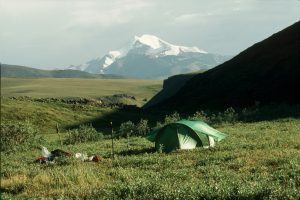
Photo Credit: Bernie Friel
Leave No Trace
Leaving no trace is a fundamental principle of wildlife observation and outdoor recreation. It emphasizes the importance of minimizing your impact on the planet by properly disposing of all trash and belongings. Littering spoils the natural beauty of wilderness areas and poses serious threats to animals. Items like glass bottles increase the risk of wildfires, as sunlight passing through glass can act as a magnifying glass, igniting dry vegetation.
Take Note of Breeding Seasons
Research when breeding seasons are to reduce disturbances during sensitive times in the critters’ life cycles. These are periods of increased activity and vulnerability for many species as they engage in mating rituals, nest building and raising offspring. By understanding and respecting these natural rhythms, you can avoid inadvertently disrupting mating behaviors or disturbing nesting sites.
These precautions reduce stress on individual animals, and contribute to the overall reproductive success and long-term survival of wildlife populations, particularly those at risk of endangerment. Breeding time for birds is typically in the spring, so take extra precautions if you’re observing them during this time. Getting too close to their nests scares the parents off, meaning they won’t be there to take care of their chicks.
Additionally, being aware of breeding seasons enables you to adjust your behavior and activities accordingly. Doing so ensures you minimize your impact, and allow wildlife the space and privacy they need to thrive during these seasons.
Photo Credit: Will Steger
Observe Without Interfering
Refrain from touching, feeding or attempting to interact with wildlife. Human food can harm animals and disrupt their natural diet, while physical contact can stress or injure them. Keep any food in bear-proof containers to prevent animals from sniffing out your snacks.
Similarly, keeping pets on a leash prevents them from chasing or harassing wildlife. Domestic animals can threaten wild species and transmit diseases, making it crucial to maintain their distance as well.
Educate Yourself
Educating yourself is a fantastic way to foster responsible wildlife observation. Researching the species you might encounter for their behaviors, habitat requirements, and conservation status enhances appreciation and respect. Remember to familiarize yourself with local regulations and wildlife viewing guidelines to ensure compliance with conservation laws and best practices. Participating in guided wildlife tours or educational programs led by experienced naturalists or park rangers offers valuable insights into wildlife behavior and habitat conservation.
Photo Credit: Marie Soleil-Blais
See Something, Say Something
This mantra is crucial for responsible wildlife observation, emphasizing the importance of taking action when encountering situations that may harm animals or habitats. Whether it’s an injured or distressed animal, witnessing wildlife harassment, spotting litter, or observing behaviors that could endanger wildlife, speaking up can make a significant difference.
Reporting injured or distressed animals to the relevant authorities enables prompt intervention and appropriate care to minimize suffering and increase the chances of survival. Similarly, altering rangers to instances of wildlife harassment or illegal activities helps protect animals and visitors, creating a safe environment for all. Addressing challenges like litter and environmental degradation ensures the preservation of wildlife habitats and promotes a culture of conservation.
Be Patient and Respect Boundaries
Encounters with wildlife can be unpredictable, requiring patience and persistence. Respecting boundaries and guidelines established by authorities ensures a positive experience for visitors and the animals.
Respect Your Nature Surroundings
By following these tips, you can enjoy memorable wildlife encounters while minimizing your impact on the animals and their habitat. Remember — the goal of wildlife observation is to appreciate and learn from these magnificent creatures while respecting their space.
Author Bio
Jack Shaw is the senior writer for Modded, a men’s lifestyle publication. An avid outdoorsman, he’ll often find himself taking retreats out into nature to explore his environment and encourages others to do the same. His writings have been published by Duluth Pack, Trekaroo, Lehman’s and more.


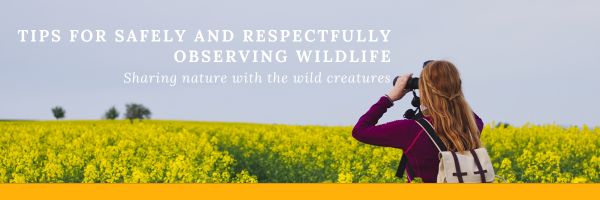
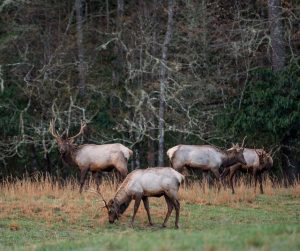
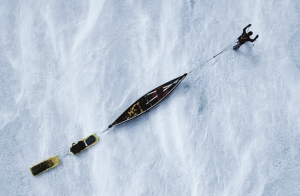
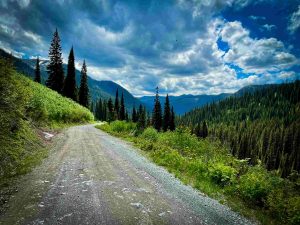
Recent Comments